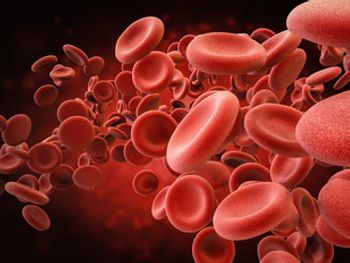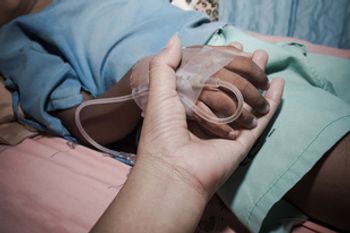
There has been little progress in improving levels of physical activity worldwide, according to new research from the World Health Organization. Here are 5 findings about physical activity and health, worldwide.

Laura is the vice president of content for The American Journal of Managed Care® (AJMC®) and all its brands, including Population Health, Equity & Outcomes; Evidence-Based Oncology™; and The Center for Biosimilars®. She has been working on AJMC since 2014 and has been with AJMC’s parent company, MJH Life Sciences®, since 2011.
She has an MA in business and economic reporting from New York University. You can connect with Laura on LinkedIn or Twitter.

There has been little progress in improving levels of physical activity worldwide, according to new research from the World Health Organization. Here are 5 findings about physical activity and health, worldwide.

HHS is seeking comments on potentially expanding safe harbors under the antikickback statute of the Stark Law in order to better promote care coordination and value-based arrangements.

Amgen has submitted a supplemental New Drug Application to the FDA to expand the prescribing information of carfilzomib (Kyprolis) to include a once-weekly dosing option in combination with dexamethasone for patients with relapsed or refractory multiple myeloma.

A new long-acting treatment for hemophilia A has been approved for previously treated patients, aged 12 years and older. Bayer’s Jivi was also approved for on-demand treatment and the perioperative management of bleeding in the same population.

As the healthcare system considers alternative payment models that reward high-value care delivery, programs that utilize lay health workers (LHW) may be valuable. A study in JAMA Oncology analyzed whether an LHW program can increase the documentation of patients’ care preferences.

New research from the Employee Benefit Research Institute has found that although there was some erosion in health insurance offered by employers after the implementation of the Affordable Care Act, the percentage of private-sector employers offering health benefits increased in 2017 for the first time since 2008.

A survey of patients in the United Kingdom who were diagnosed with cancer found that patients with blood cancers were the least likely to say they completely understood what was wrong when the doctor explained it. They were also less likely to say that their treatment options were explained before treatment started compared with patients with other cancers.

As cure rates for young patients with Hodgkin lymphoma (HL) improve, the historically negative impact of treatments has to be considered. However, a new study has found that over time, childbearing rates for female survivors of HL have improved to the point of approaching the rates of the general population.

In a new commentary in JAMA Internal Medicine, authors highlighted the results of the hospital-at-home (HaH) program at Mount Sinai Health System that resulted in the Physician-Focused Payment Model Technical Advisory Committee recommending full implementation of the bundled HaH program, as well as clinical and policy issues raised by the program.

The first patient has been treated in a phase 2b dose-confirmation study of AMT-061, an investigational gene therapy for the treatment of patients with severe and moderately severe hemophilia B. Once the dosing of AMT-061 is confirmed, the safety and efficacy of the therapy will be evaluated in the global phase 3 HOPE-B clinical trial.

The proposed Medicare Shared Savings Program rule has many sweeping changes that present a number new opportunities, but also challenges. In addition, the National Association of ACOs highlighted its concerns that the changes will decrease the number of ACOs and may discourage new entrants.

A blood test that tracks the rise and fall of circulating tumor DNA (ctDNA) levels can predict how patients with diffuse large B-cell lymphoma will respond to therapy within days of starting treatment.



Using lower-cost generic drugs that are as safe and effective as the brand-name versions could have saved more than $900 million in Medicare in 2016, according to research published in JAMA.

Payment reform efforts that don't engage patients are missing out on an opportunity for greater improvements, especially in cancer, where patients face substantial cost sharing.

Accountable care organizations (ACOs), either directly or indirectly, are affecting physician employment patterns in regions where they have high penetration.

A new technology platform utilizing artificial intelligence (AI) could change how drug combinations are designed and help doctors to identify optimal personalized drug combinations for patients with multiple myeloma.

Chronic diseases, insufficient access to care, and social determinants of health are targets that can help reduce maternal mortality.

The FDA has approved a new drug to treat 2 rare types of non-Hodgkin lymphoma based on phase 3 clinical trial results that found mogamulizumab-kpkc improved progression-free survival and had a higher overall response rate compared with the chemotherapy vorinostat.

A new rule in the Medicare Access and CHIP Reauthorization Act’s 2019 Quality Payment Program and the proposed 2019 Medicare Physician Fee Schedule could negatively affect the quality of cancer care for Medicare beneficiaries, according to the American Society of Clinical Oncology.

While more healthcare organizations are understanding the benefit of upstream interventions, sustainable financing is still lacking.

A new report from the Congressional Budget Office explored Medicaid managed care’s enrollment and spending and factors that affect both.

A progress report from the Leukemia & Lymphoma Society highlighted policy measures that have eased the burden on patients, but also noted where more work is needed.

The Trump administration will allow Medicare Advantage plans to negotiate prices for Part B drugs by providing them the opportunity to create plans that utilize step therapy. However, some in the healthcare industry view step therapy, also known as "fail first," as dangerous to patients with life-threatening diseases, such as cancer.

Advances in Hodgkin lymphoma treatment has led to high survival rates, but adolescents and young adults, who represent the largest age group affected by the disease, face lifelong morbidities from clinical trials. New analytic methods could help inform future protocol changes.

If patients want to be empowered to control their healthcare and if the United States wants healthcare to be economically efficient, then interoperability is critical, said Don Rucker, MD, the National Coordinator for Health Information Technology (IT), during the Office of the National Coordinator for Health IT’s 2nd Interoperability Forum. He was followed by CMS Administrator Seema Verma, who disparaged the current technological situation and painted a future where health data followed the patient and can be shared at the press of a button.

Payment reforms efforts are still facing barriers, but buy-in and increased demand from self-insured employers can help spur widespread adoption of new payment models that will lead to health delivery system reforms, according to a commentary published in New England Journal of Medicine.

If Medicare was allowed to negotiate drug prices, the Medicare Part D program could save $2.8 billion in 1 year on the 20 most commonly prescribed drugs alone, according to a new report from Senator Claire McCaskill, D-Missouri, the top-ranking Democrat on the Senate Homeland Security and Governmental Affairs Committee.

In addition to survival among adolescents and young adults (AYAs) with hematological malignancies lagging behind that of children and older adults, AYAs also face unique challenges related to their physical, psychosocial, and economic circumstances.

259 Prospect Plains Rd, Bldg H
Cranbury, NJ 08512
© 2025 MJH Life Sciences®
All rights reserved.
